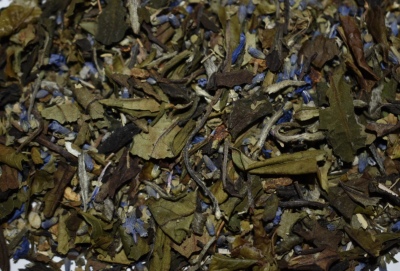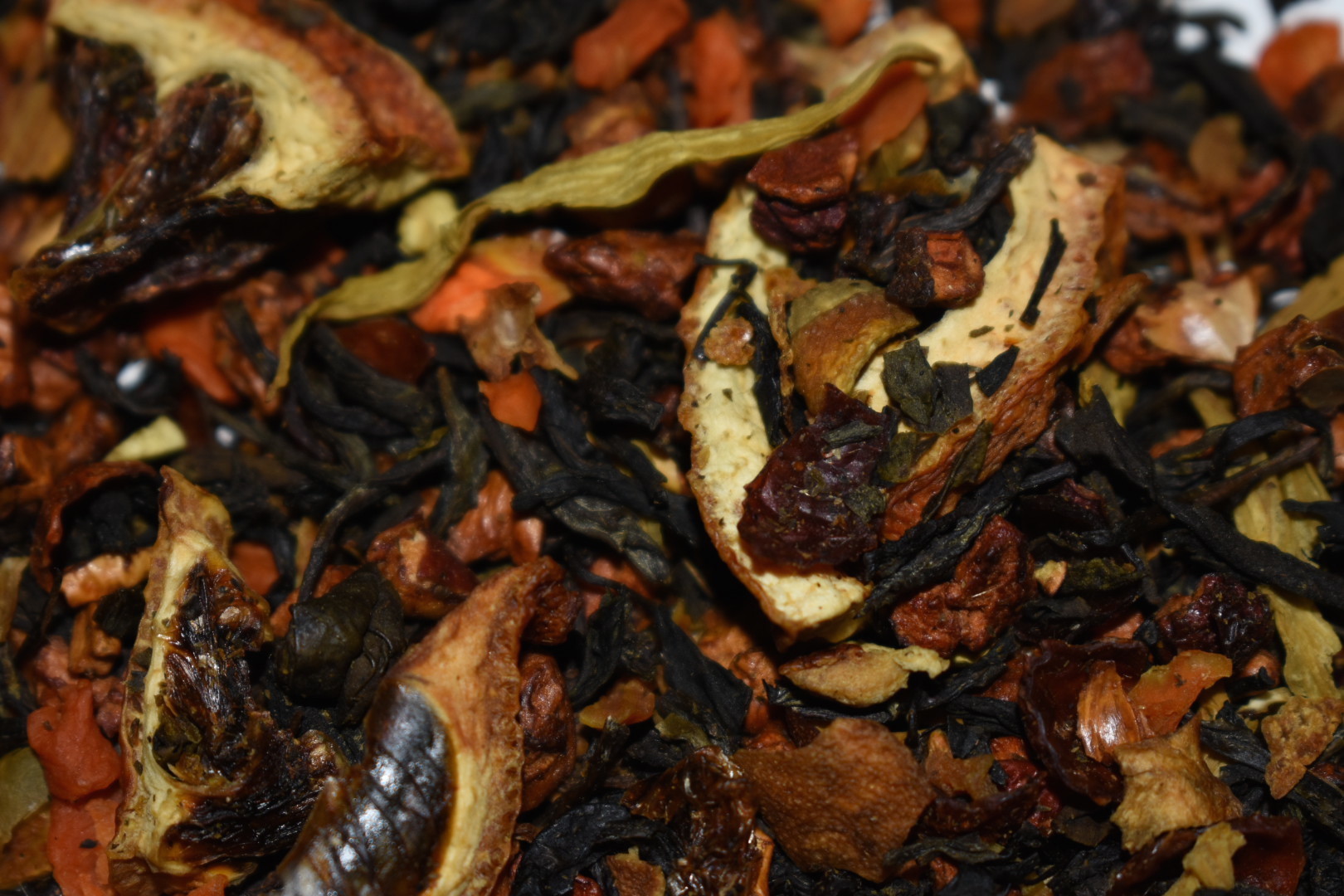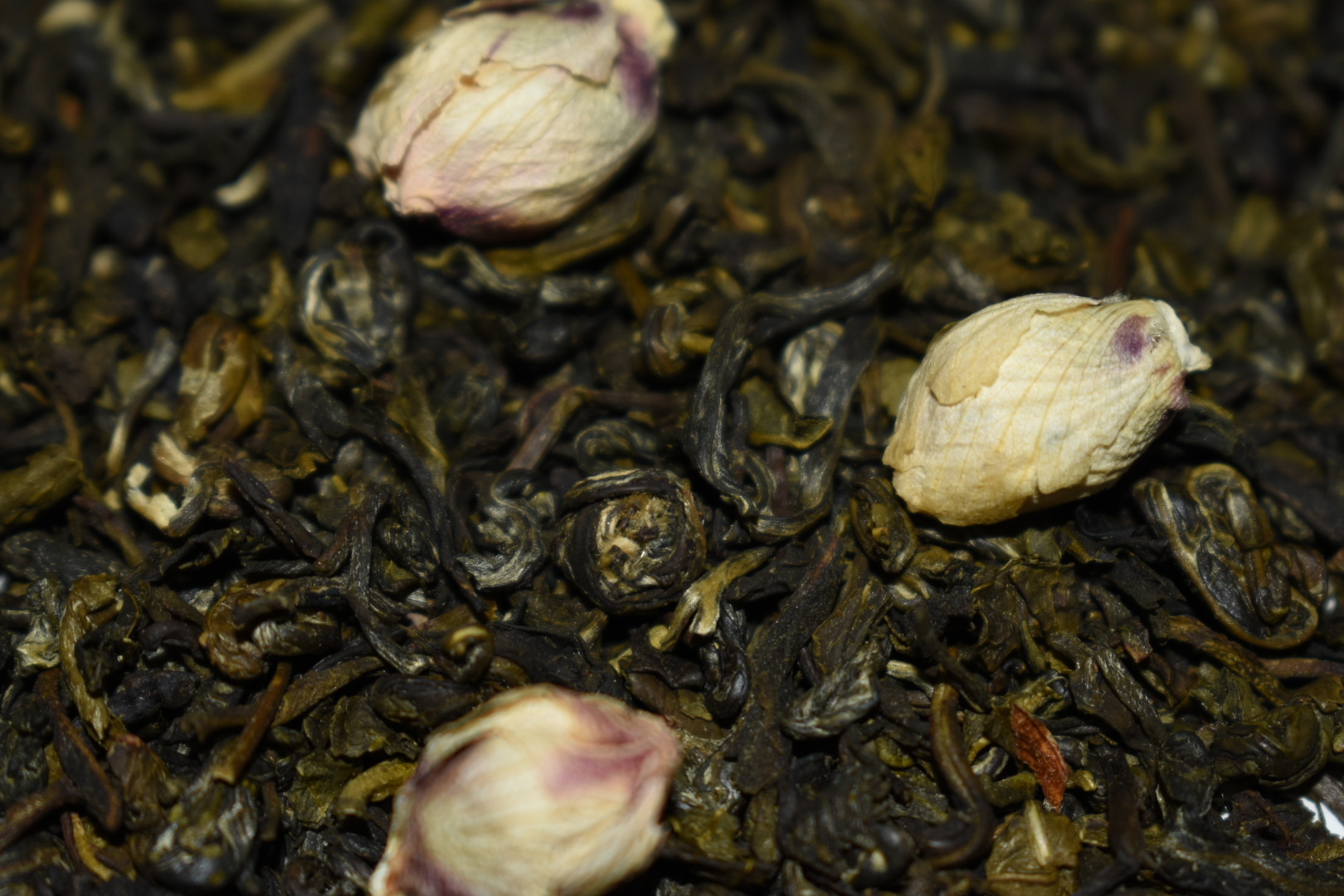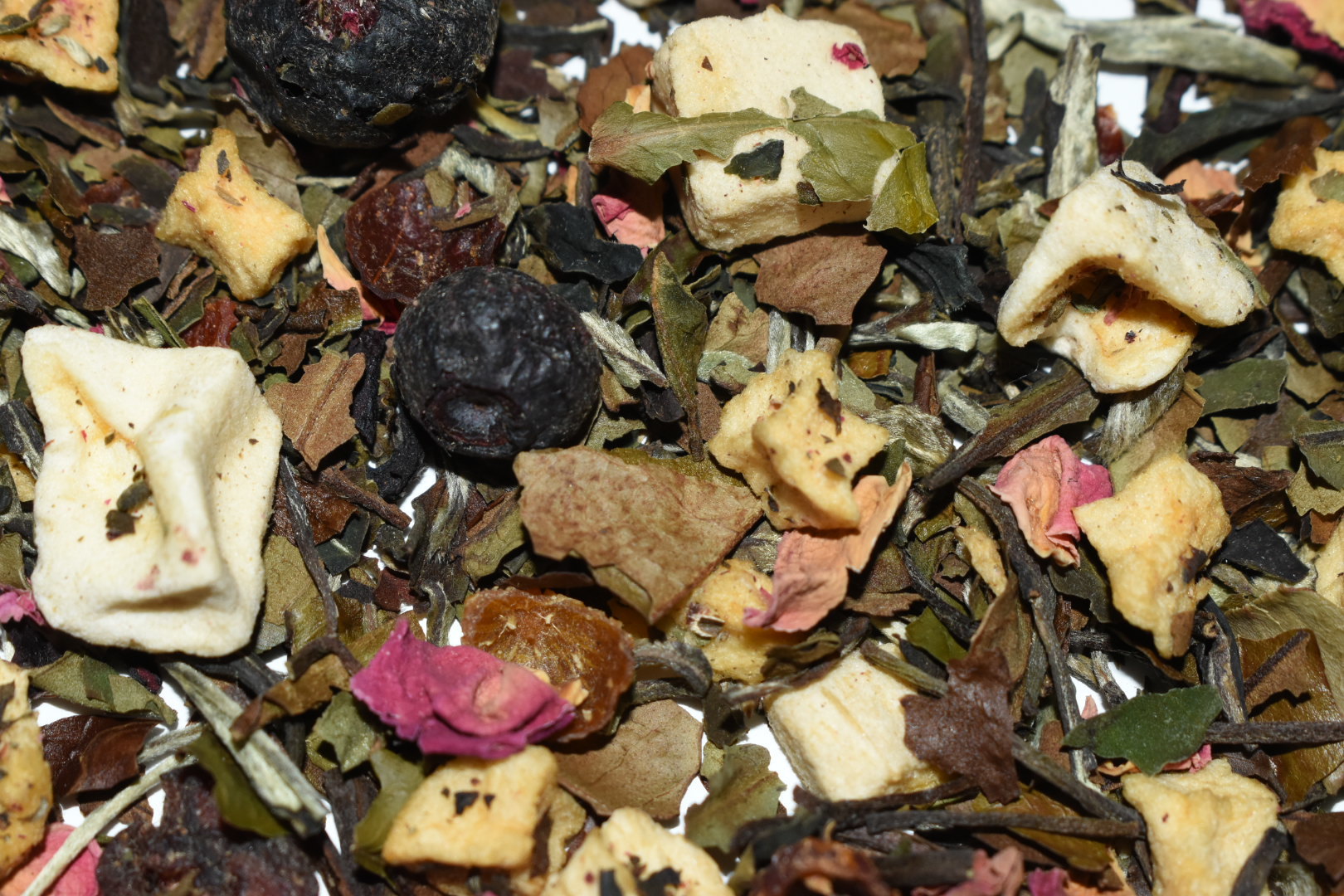White Tea
~Teas & Such
White Tea is essentially unprocessed tea. The name is derived from the fuzzy white "down" that appears on the unopened or recently opened buds. White tea is simply plucked and allowed to wither dry. If the weather isn't cooperating, the leaves are put into a gentle tumble dryer on very, very low heat to speed up the process. These leaves are not rolled, shaped, or anything. Some minimal oxidation does happen naturally, as it can take a full day or two to air-dry, but this is why some white teas, like the classic Pure Peony (also know as White Peony) shows leaves of differing colors, white, green and brown. White teas produce very pale green or yellow liquor and are the most delicate in flavor and aroma.

Most of the white tea in the world comes from China, but there are regions of India and Sri Lanka that have started producing it. There are also some vaarious styles of white tea as well. In the finest whites, only the unopened buds - still covered by fine white hairs - are hand-plucked and harvested. On others, the newest leaves are plucked just after opening. The fine white hairs gives some varieties their distingushed names, and are also a sign of good quality. White tea is much scarcer than the other traditional teas, hence why they are a quite bit more expensive.
The original White Teas came from the Fujian province of China during the 18th Century Qing Dynasty. In 1885, specific cultivators of teas were selected. The most common cultivars include Da Hao (Big Silvery-Hair), Da Bai (Big White), and Xiao Bai (Small White). Each type yields silvery-white leaf buds, which are traditionally harvested in the early spring. Because this annual, bud-only harvest produced a very limited crop, open leaf white tea production began in 1922 with the creation of Pure Peony (aka Pai Mu Tan or Bai Mu Dan). These teas included the first and sometimes second open leaf along with the bud.
White teas are versatile and forgiving in their preparation, therefore many varying ways on how to brew them. Making them much more flexible than that of green teas. Their smooth, naturally sweet qualities make them excellent to use when learning about brewing tea in general. A good starting point is 175º or 180º for 3-7 minutes. You could also use hotter water, 190º or so, and steep it for much less time. Cooler water for a longer time will yield sweetness and a soft, delicate quality. Hotter water for a shorter time will make a brighter cup with more body. Also, as most white teas can be very large and fluffy, you should use more leaves, 2 or more heaping teaspoons per 8 ounces of water.
One serving of white tea can be brewed several times, with each steeping revealing another element of flavor. Experiment with these methods to find the perfect cup of white tea to fit your own personal taste preference.
While white teas have yet to receive the true praise and attention that they deserve, the fact that they are beginning to reach many large markets is a testament to the quality and durability of tea. Thank goodness, there may be still hope for the true awareness of this delicacy across the globe!
Top
Back





